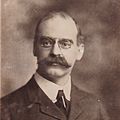
Middlewich is a town in the unitary authority of Cheshire East and the ceremonial county of Cheshire, England. It is located 19.2 miles (30.9 km) east of Chester, 2.9 miles (4.7 km) east of Winsford, 5.3 miles (8.5 km) south-east of Northwich and 4.7 miles (7.6 km) north-west of Sandbach. The population at the 2011 Census was 13,595.

A civil parish is a country subdivision, forming the lowest unit of local government in England. There are 333 civil parishes in the ceremonial county of Cheshire, most of the county being parished. Cheshire East unitary authority is entirely parished. At the 2001 census, there were 565,259 people living in 332 parishes, accounting for 57.5 per cent of the county's population.

The City of Chester was a constituency represented in the House of Commons of the UK Parliament since 2 December 2022 by Samantha Dixon of the Labour Party. She was elected in the by-election held following the resignation of Chris Matheson MP on 21 October 2022.

Eddisbury was a constituency in Cheshire last represented in the House of Commons of the UK Parliament since 2019 by Edward Timpson, a Conservative who left office at the dissolution of parliament in advance of the 2024 United Kingdom general election, at which this former constituency was replaced.

Tatton is a constituency in Cheshire represented in the House of Commons of the UK Parliament since 2017 by Esther McVey, a Conservative.

Weaver Vale was a constituency in Cheshire represented in the House of Commons of the UK Parliament.
From 2024, the ceremonial county of Cheshire is divided into twelve parliamentary constituencies; one borough constituency, and 11 county constituencies. Two constituencies are partly in the county of Merseyside.
Altrincham was a county constituency of the House of Commons of the Parliament of the United Kingdom from 1885 to 1945. It elected one Member of Parliament (MP) by the first past the post system of election.

Mid Cheshire is a constituency of the House of Commons in the UK Parliament. It is represented by Andrew Cooper of the Labour Party.
West Cheshire is a former parliamentary constituency, which returned two Members of Parliament (MPs) to the House of Commons of the Parliament of the United Kingdom.

Crewe was a constituency of the House of Commons of the Parliament of the United Kingdom from 1885 to 1983. It elected one Member of Parliament (MP) by the first past the post system of election.

Runcorn was a parliamentary constituency centred on the town of Runcorn in Cheshire. It returned one Member of Parliament (MP) to the House of Commons of the Parliament of the United Kingdom, elected by the first past the post system.

Knutsford was a county constituency in Cheshire which returned one Member of Parliament (MP) to the House of Commons of the Parliament of the United Kingdom from 1885 until it was abolished for the 1983 general election.

Nantwich was a parliamentary constituency in Cheshire which returned one Member of Parliament (MP) to the House of Commons of the Parliament of the United Kingdom, elected using the first-past-the-post voting system.
Louth was a county constituency in Lincolnshire which returned one Member of Parliament (MP) to the House of Commons of the Parliament of the United Kingdom from 1885 until it was abolished for the 1983 general election.

Northwich Rural District was a rural district surrounding, but not including the towns of Northwich and Winsford in Cheshire, which were separate urban districts. It was created in 1894 from the Northwich Rural Sanitary District.
The ceremonial county of Cheshire, which comprises the unitary authorities of Cheshire East, Cheshire West and Chester, Halton and Warrington, returned 11 MPs to the UK Parliament from 1997 to 2024. Under the 2023 review of Westminster constituencies, coming into effect for the 2024 general election, the boundary commission proposed 12 constituencies, including two which crossed the border into the county of Merseyside.















